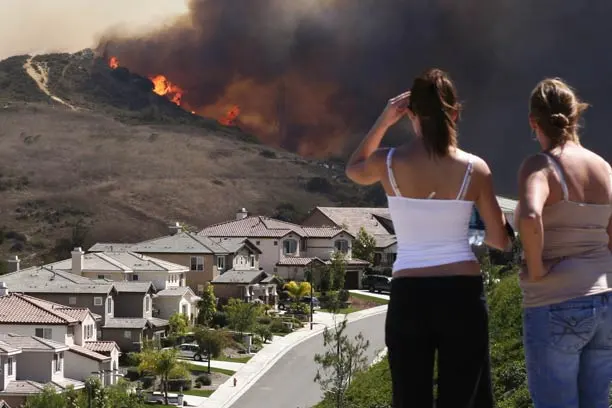7 Steps to Prevent Wildfire Damage to Your Home


Wildfires pose a great risk to communities across the country. This advice can teach you how to prepare for a wildfire and help you protect your home.
How likely are wildfires where you live, and how intense can they be? You can look up the wildfire risk for your area to get a better idea. Keep in mind that when there’s no rain in your area for a long time, wildfire risk is higher. Knowing your risk can help you plan, based on the likelihood that fires could strike.
Trees, shrubs, bushes and vines can fuel wildfires and put your home at risk. Limit or remove vegetation within 30 feet of your house. Keep 15 feet of clearance between chimneys and any branches or bushes. Trim trees so branches are at least 15 feet off the ground. Cut your lawn regularly and clear out leaves, twigs and flammable debris.
Keep firewood 100 feet away from your house, and make sure your gas grill and propane tank are 15 feet from the house. Don’t store anything flammable under porches or decks.
For a wildfire-prepared home, you’ll want to enclose the area below any decks or porches so embers can’t land there and ignite the structure above them. Cover vents and louvers in your home with wire mesh to help block embers.
Many wildfires damage homes when embers land on the roof. Make fire less likely to spread by keeping your gutters clear of leaves and needles from trees, which can burn quickly and ignite the roof.
If you’re replacing your roof, remember that wood, shake and shingles are among the least fire-resistant building materials. Fiberglass, metal, slate and clay or concrete tiles are better options.
You can treat wood siding with chemicals that make it less flammable, but you need to repeat the treatment over time so it maintains protection of your home.
If you’re installing new siding, choose stucco, metal, brick, rock, concrete or cement.
Enough heat can pass through windows to ignite things inside your home. Fire-resistant awnings, shutters and drapes, and thermal glass can help block heat.
Even if you’ve taken these steps to protect your home from a wildfire, you can’t reduce your risk to zero. Know how your community will alert you to a wildfire and learn different routes out of your neighborhood in case some aren’t passable. Arrange a family meeting spot in case you get separated.
An important step in keeping your family and home safe is packing emergency supplies, important documents and prescription medications in a bag or box that you can quickly take with you if you need to leave. Don’t wait until a wildfire gets close — if your neighborhood is at risk, give yourself plenty of time to evacuate.
How do you prepare for a wildfire? Part of your planning should include reviewing your homeowners insurance coverage. You want to make sure your home and possessions are protected from damage caused by fire, smoke or water used to douse the flames.
A Farm Bureau insurance agent can check your coverage and make sure you have the right protection in place. Reach out today to make sure you have the insurance you need.